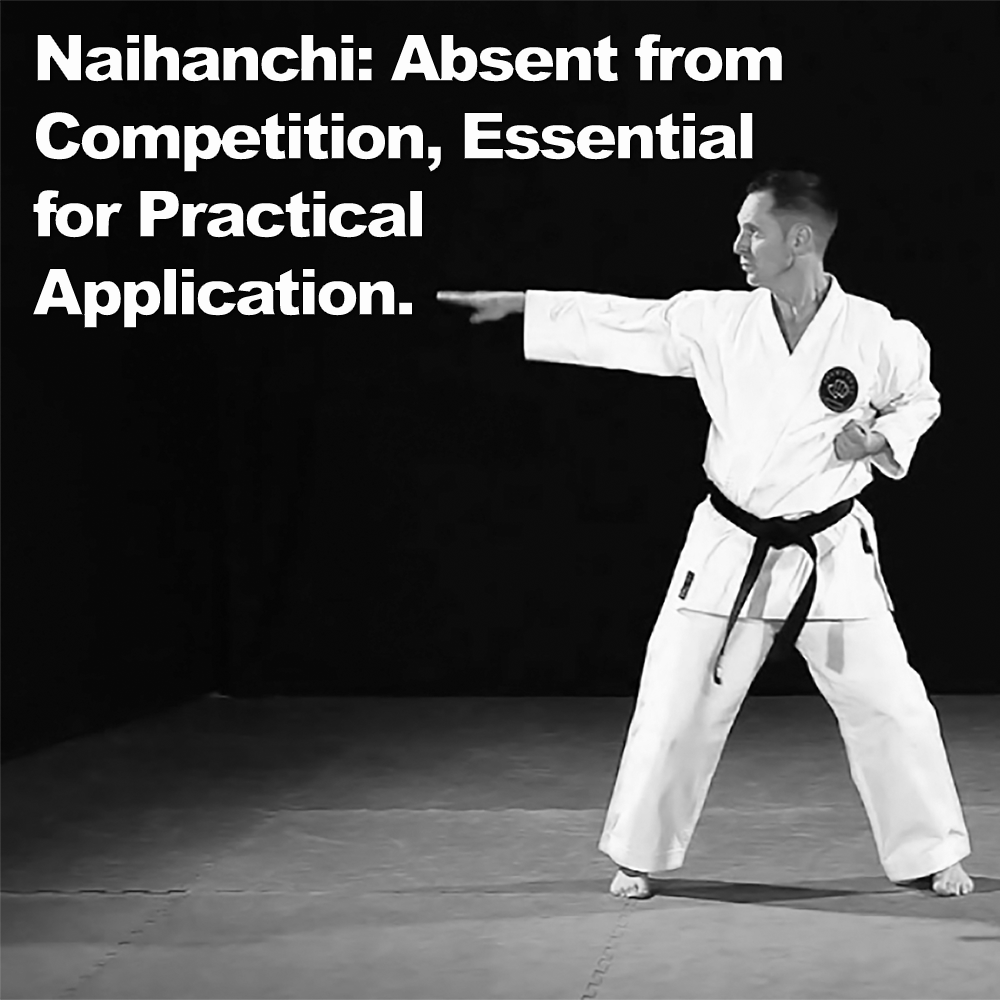
Naihanchi: Absent from Competition, Essential for Practical Application.
Posted by ADAM CARTER on SEP 20, 2024

Naihanchi: Absent from Competition, Essential for Practical Application.
(Approx 2 minute read)
Naihanchi kata, simple in appearance but profound in application. Its name is commonly interpreted as “sideways fighting”, referencing the kata’s distinctive embusen. Although other interpretations also exist.
Gichin Funakoshi, renamed the kata ‘Tekki’ (Iron Horse), honoring his teacher Anko Itosu and emphasizing its strength and stability. While the precise origins of Naihanchi are unknown, some sources suggest that Sokon Matsumura (1809-1899), may have played a role in bringing it from China.
Matsumura made several trips to China as an envoy, where he studied martial arts from both military and civilian sources. It’s possible he encountered the kata during these journeys, or learned it from Chinese martial artists who visited Okinawa.
In the past, Naihanchi was the first kata taught to students – not because it was simplistic, but because it embodied core principles considered essential for combat. Unlike modern systems that introduce simpler techniques first, Okinawan karate often began with more complex lessons.
Naihanchi was taught as introductory forms long before the development of kata such as the Fukyugata or the Pinan kata.
As Otsuka Hironori (1892-1982), the founder of Wado-Ryu, remarked, “I personally favor Naihanchi. It is not interesting to the eye, but it is extremely difficult to use. Naihanchi increases in difficulty with more time spent practicing it. However, there is something ‘deep’ about it”.
Some believe that Naihanchi Nidan and Sandan were created by Anko Itosu, and it’s often suggested the three may have originally been one kata that he later divided, as only Naihanchi Shodan has a formal opening.
Kentsu Yabu (1866-1937), a student of Itosu, stated, “Karate begins and ends with Naihanchi”, emphasizing the kata’s importance.
Despite its understated appearance, Naihanchi is rich with highly effective techniques and concepts. You will never see it in competition and many modern students may overlook it due to its perceived simplicity. But it remains a vital study for those that have an interest in all things pragmatic.
Choki Motobu, one of Okinawa’s most formidable fighters, heavily emphasized the kata in his teachings.
Motobu, a pragmatist known for his real-world fighting ability, believed that the study of Naihanchi was crucial to learning effective combat . The kata’s techniques are designed for close-range fighting, integrating strikes and grappling in a way that makes them both practical and direct. It’s this close-quarter combat application that makes it a cornerstone of classical karate’s combative repertoire.
For those seeking to enhance their close-range fighting skills, Naihanchi offers a wealth of knowledge, it’s certainly one of my favorites, one I often championed when teaching seminars and courses. Its methods and techniques, though simple in appearance, are potent and deserve deep and consistent practice.
If you wish to follow in the footsteps of karate’s greatest masters, then study Naihanchi deeply, as it holds the key to many of the core principles of classical karate.
Written by AC.
